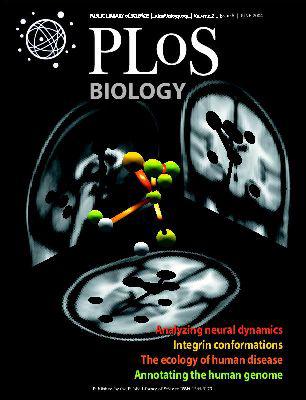Integration of estimated regional gene expression with neuroimaging and clinical phenotypes at biobank scale
IF 7.2
1区 生物学
Q1 BIOCHEMISTRY & MOLECULAR BIOLOGY
引用次数: 0
Abstract
An understanding of human brain individuality requires the integration of data on brain organization across people and brain regions, molecular and systems scales, as well as healthy and clinical states. Here, we help advance this understanding by leveraging methods from computational genomics to integrate large-scale genomic, transcriptomic, neuroimaging, and electronic-health record data sets. We estimated genetically regulated gene expression (gr-expression) of 18,647 genes, across 10 cortical and subcortical regions of 45,549 people from the UK Biobank. First, we showed that patterns of estimated gr-expression reflect known genetic–ancestry relationships, regional identities, as well as inter-regional correlation structure of directly assayed gene expression. Second, we performed transcriptome-wide association studies (TWAS) to discover 1,065 associations between individual variation in gr-expression and gray-matter volumes across people and brain regions. We benchmarked these associations against results from genome-wide association studies (GWAS) of the same sample and found hundreds of novel associations relative to these GWAS. Third, we integrated our results with clinical associations of gr-expression from the Vanderbilt Biobank. This integration allowed us to link genes, via gr-expression, to neuroimaging and clinical phenotypes. Fourth, we identified associations of polygenic gr-expression with structural and functional MRI phenotypes in the Human Connectome Project (HCP), a small neuroimaging-genomic data set with high-quality functional imaging data. Finally, we showed that estimates of gr-expression and magnitudes of TWAS were generally replicable and that the在生物库规模上将估计的区域基因表达与神经影像学和临床表型相结合
要了解人类大脑的个性,就必须整合不同人群和脑区、分子和系统尺度以及健康和临床状态的大脑组织数据。在这里,我们利用计算基因组学的方法整合了大规模基因组、转录组、神经影像学和电子健康记录数据集,从而帮助加深对这一问题的理解。我们估算了英国生物库中 45,549 人的 10 个皮层和皮层下区域中 18,647 个基因的基因调控表达(gr-expression)。首先,我们发现估计的基因表达模式反映了已知的遗传-后裔关系、区域特征以及直接测定的基因表达的区域间相关结构。其次,我们进行了全转录组关联研究(TWAS),发现了 1,065 种不同人群和脑区的 gr 表达量个体差异与灰质体积之间的关联。我们将这些关联与同一样本的全基因组关联研究(GWAS)结果进行了比对,发现了数百种与这些 GWAS 相关的新关联。第三,我们将研究结果与范德比尔特生物库(Vanderbilt Biobank)中的 gr 表达临床关联进行了整合。这种整合使我们能够通过 gr 表达将基因与神经影像和临床表型联系起来。第四,我们在人类连接组计划(Human Connectome Project,HCP)中发现了多基因 gr 表达与结构性和功能性 MRI 表型的关联,HCP 是一个具有高质量功能成像数据的小型神经成像基因组数据集。最后,我们表明,gr 表达的估计值和 TWAS 的量级通常是可复制的,TWAS 的 p 值在大样本中也是可复制的。总之,我们的研究结果为将 gr 表达与大脑组织和疾病的群体遗传学结合起来提供了强大的新资源。
本文章由计算机程序翻译,如有差异,请以英文原文为准。
求助全文
约1分钟内获得全文
求助全文
来源期刊

PLoS Biology
生物-生化与分子生物学
CiteScore
14.40
自引率
2.00%
发文量
359
审稿时长
3 months
期刊介绍:
PLOS Biology is an open-access, peer-reviewed general biology journal published by PLOS, a nonprofit organization of scientists and physicians dedicated to making the world's scientific and medical literature freely accessible. The journal publishes new articles online weekly, with issues compiled and published monthly.
ISSN Numbers:
eISSN: 1545-7885
ISSN: 1544-9173
 求助内容:
求助内容: 应助结果提醒方式:
应助结果提醒方式:


